Most visitors to Hungary focus on the popular tourist destinations like Budapest and Lake Balaton, but with the help of my Hungarian friend, Zsuzsa Mehesz, I’ve had the great good fortune to see untouched parts of the country. On my most recent visit, she packed me into the car and headed for the Zemplen Protected Landscape in the northeast corner of Hungary. We began with lunch in the Tokaj Wine Region, a small plateau of volcanic soils near the Carpathian Mountains, so famous for its sweet wines that it has been named a UNESCO World Heritage Site. Even under dingy skies, the view of vineyard-covered rolling hills from the Yellow Wine House Restaurant was stunning.
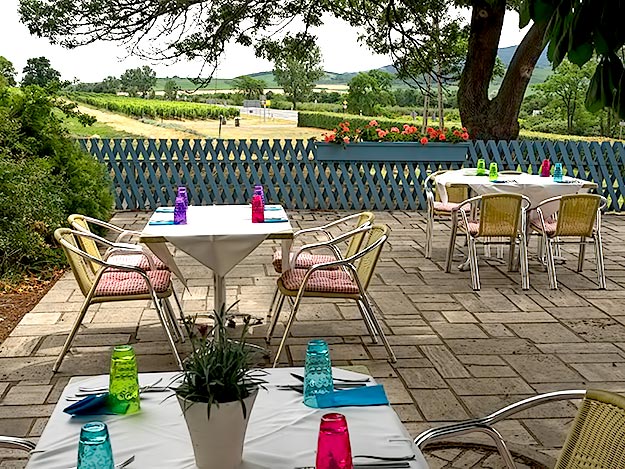
Before getting back on the road we strolled through the vineyards, our shoes sinking deep into the loamy brown soil as we parted the leaves on the undersides of the vines, searching for clusters of fruit. We didn’t have to look hard; bunches of chartreuse grapes hung heavy on the undersides, promising an abundant harvest.

A few miles down the road we left the Tokaj and headed into the little-known Zemplen region, where eagles glide over volcanoes formed some 12-15 million years ago. Ancient eruptions laid down tuff, 600 feet thick in places, which was later flooded by inland seas. The seas eventually receded, leaving behind a thick layer of sediment that was pocked by boulders as glaciers receded during the last ice age. The landscape we see today continues to be shaped by the extreme weather of the Zemplen: blistering summers and frigid winters shatter boulders into ever smaller progeny, creating a sea of stones. In the midst of this vast and desolate panorama stands a massive rock outcropping, topped by the medieval Boldogko Castle.
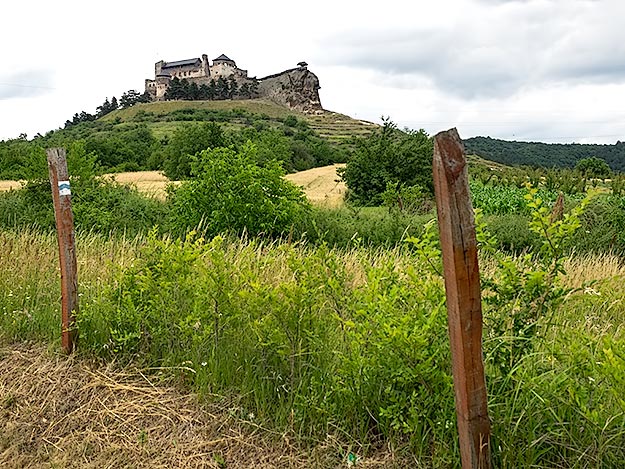
At the top of the hill we picked our way across crazily tilted cobblestones and up stairs carved in the stone to the castle entrance. I was ready to turn back when a light drizzle began to fall, making the slick rock treacherous, but Zsuzsa urged me to continue to a stone archway that pierced the castle’s ramparts. Reluctantly, I did so, keeping my eyes on my feet so as not to trip. Finally, I looked up and gasped at the dizzying scene before me.

Beyond the arch, a rickety wooden walkway led along a razor-thin ridge of the monolithic rock known as Lion’s Head, upon which the castle had been built. I summoned every ounce of my courage and walked out to the watchtower, which in earlier centuries had ensured no enemy could approach unseen. The vista that spread before me attested to the Zemplen’s volcanic origins: Lion’s Head stood in the center of a ring of hills that were indisputably ancient eroded volcano cones.
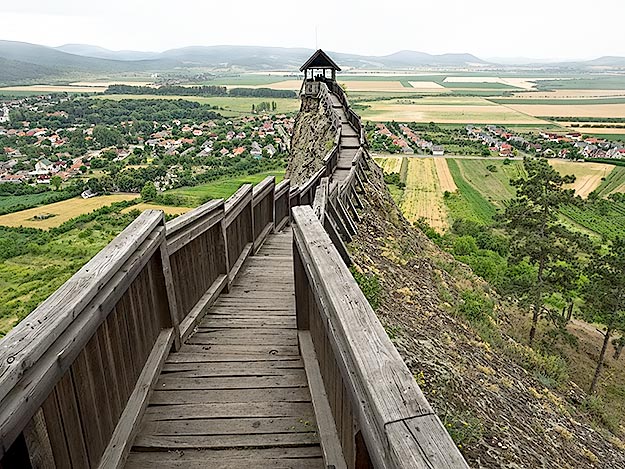
When drizzle turned to steady rain, we fled for the safety of the car and headed further into the nether lands of the Zemplen. Twenty minutes later we pulled into Vizsoly, which in the 12th century had enjoyed status as a market town due to its location along an important trading route. Today, fewer than 1,000 people live in the village and it no longer sits at an important crossroad, but it is still home to the Protestant Reformatus Church, built before 1220 and believed to be the oldest church in Hungary.
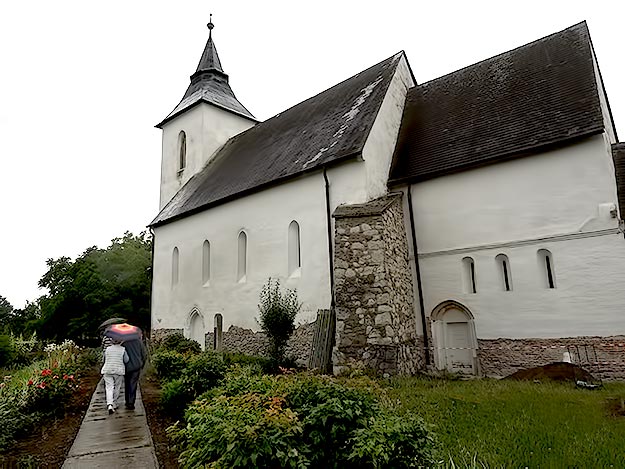
Within its whitewashed walls lies a copy of the Carol Bible, the first complete Hungarian translation of the bible. Completed in 1590, an estimated 700-800 copies were printed. Today, only 51 copies are known to exist. The last one sold at auction fetched more than $50,000, so I was astonished that the copy in the church is encased in a glass display case that sits beneath a window, with sunlight streaming down onto its fragile pages. The case has no temperature or humidity controls and even worse, it sits amid scaffolding and piles of debris from the restoration currently underway inside the church.
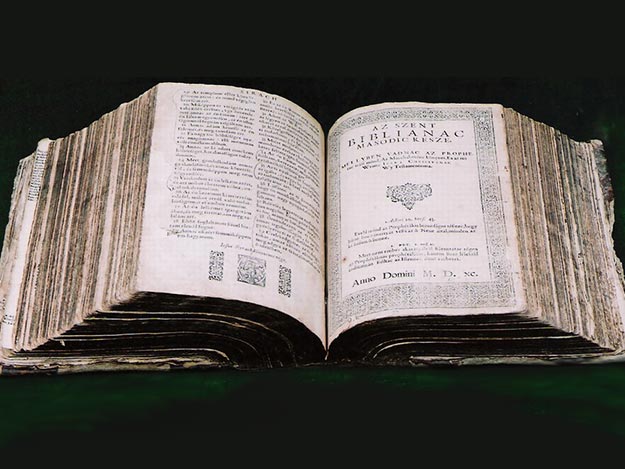
Although little thought has been given to protecting the bible from the elements, there is great concern about theft. Thieves have targeted it twice over the years: the first time, a few pages were stolen; the second time the entire book was taken. A year later it was discovered in an abandoned building in Slovakia. As a result, no photos are allowed inside the church.
The persistent rain and chill temperatures finally sent us scurrying back to Panyola, but no amount of inclement weather can dampen my fascination with this country that has so much more to offer than Budapest and Lake Balaton.

Thank you Barbara for sharing! I am so glad to see that you are sharing posts from not-too-touristy parts of Hungary. Although I am obsessed with Budapest, I also love the countryside very much, and Zemplen is very close to where I grew up, I visited there a good couple of times. The whole region of Northern-East Hungary is wonderful, very well worth a visit!
Beautiful barbara i always enjoy reading your blog .. you are great writer , when i read your posts i always feel like i am part of the story that you are telling
Simply beautiful. Love the pictures… Thanks..
You’re welcome, Tina. Thanks for your comment.